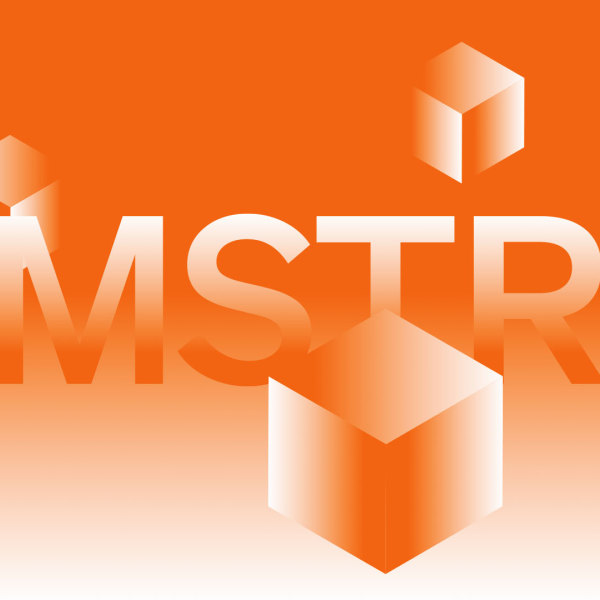zkFOL: The Bitcoin Soft Fork Promising Native Privacy & DeFi
For over a decade, Bitcoin has remained frozen in apparent simplicity. Its Script language, deliberately limited, has sacrificed expressiveness on the altar of security. Meanwhile, Ethereum, Solana, and Avalanche have captured hundreds of billions of dollars in liquidity by offering programmable smart contracts. But this expressiveness came with vulnerabilities: reentrancy, unpredictable execution costs, critical attacks.

In Brief
- zkFOL brings native DeFi and privacy to Bitcoin without breaking its security model.
- A mathematical breakthrough turns first-order logic into verifiable polynomials, enabling complex smart contracts.
- ModulusZK’s approach offers fast proofs, true programmability, and a path to a future Bitcoin soft fork.
What if Bitcoin could have the best of both worlds? That’s exactly what zkFOL promises—a revolutionary soft fork concept from ModulusZK, that brings native DeFi and privacy to Bitcoin without compromising its fundamental philosophy. This innovation relies neither on risky workarounds nor on federated sidechains. It’s built on a major mathematical breakthrough: the arithmetization of first-order logic.
The Problem: Bitcoin Script, a Deliberately Constrained Language
Bitcoin Script was designed to be predictable and secure. No loops, no recursion, no mutable global state. Each transaction validates in deterministic time, ensuring the network cannot be blocked by infinite computations. This rigor is why Bitcoin has never suffered a major exploit at the consensus level.
But this conservatism comes at a price. Bitcoin Script cannot:
- Store state between transactions
- Execute complex conditional logic
- Handle multi-party contracts without enormous manual scripts
- Support 64-bit arithmetic or floating-point numbers
As a result, 99% of DeFi innovations were built elsewhere. Developers wanting to create AMMs, lending protocols, or complex vaults had to migrate to Ethereum, or build side chains—diluting Bitcoin’s dominance despite its overwhelming market capitalization.
The Breakthrough: Arithmetizing Logic to Make It Verifiable
The zkFOL solution rests on an elegant yet profound mathematical insight: transform logic directly into polynomials.
In modern cryptography, arithmetic circuits (combinations of multiplications and additions over finite fields) have replaced traditional Boolean circuits for a simple reason: polynomials can be verified succinctly. Thanks to the Schwartz-Zippel lemma, verifying that a polynomial equals zero at a random point suffices to prove its identity with negligible error probability.
Recent research by Dr. Murdoch Gabbay in arithmetization has demonstrated that it is possible to translate any first-order logic predicate (FOL) directly into an equivalent polynomial over a finite field. Concretely:
- Logical conjunctions (∧) become additions
- Disjunctions (∨) become multiplications
- Universal quantifiers (∀) translate to finite sums
- Existential quantifiers (∃) become finite products
Result: A complex logical predicate compiles into a single polynomial, whose verification reduces to evaluating at a random point and checking it equals zero. This verification takes constant time, independent of the predicate’s initial complexity.
From Theory to Implementation: ModulusZK’s Approach
While the mathematical foundations come from academic research, ModulusZK is the team translating this breakthrough into production systems. Founded by the pseudonymous Mr O’Modulus—who authored the soft fork proposal—ModulusZK is building what they call Layer X: a proof coordination layer that applies FOL arithmetization across multiple blockchain contexts.
The Bitcoin zkFOL implementation represents one application of their broader vision: instead of building yet another competing chain, they’re creating universal proving infrastructure that enhances existing networks.
How zkFOL Works in Practice
The zkFOL system applies Gabbay’s arithmetization directly to Bitcoin through a two-phase approach:
Phase 1: Layer-2 Architecture with 1:1 Peg
zkFOL operates initially as a Layer-2 anchored to Bitcoin:
- Users lock BTC in a transparent multi-signature vault on the Bitcoin blockchain (Layer 1)
- They receive wBTC-FOL (1:1 with locked BTC) on the zkFOL layer
- All DeFi transactions (swaps, loans, yield farming) execute off-chain with zero-knowledge proofs
- Proof commitments are periodically anchored to Bitcoin to guarantee data availability
- Withdrawal releases BTC from the vault after cryptographic verification of the final state
Unlike existing solutions, zkFOL relies on no trusted validators. Verification is purely mathematical.
Phase 2: Soft Fork Integration (Future)
Once proven secure and efficient as Layer-2, the long-term goal is bringing polynomial verification directly to Bitcoin’s base layer through a soft fork—a backward-compatible protocol upgrade.
Compilation: Logic → Polynomial → Proof
Each zkFOL contract is specified in first-order logic. For example, a constant product AMM is simply written as:
∀X. (Δreserve_A × Δreserve_B = k) ∧ (fees ≤ 1%)
This formula automatically compiles into:
- A multivariate polynomial where each term encodes a constraint
- A cryptographic commitment hiding the coefficients
- A zero-knowledge proof (zkSNARK) attesting that the polynomial evaluates to zero at the verified point
The verifier only needs to:
- Calculate an evaluation at a random point
- Verify the polynomial commitment
- Confirm the result equals zero
All in constant time, regardless of contract complexity.
Why This Matters: The Circuit-First Paradigm Trap
The entire ZK industry has been trapped in what ModulusZK calls the “circuit-first paradigm”—trying to make arithmetic circuits more efficient rather than questioning whether circuits are the right abstraction at all.
Traditional ZK Approach (zkSync, StarkNet, Polygon):
// Developer must manually write 200+ circuit constraints
circuit SwapCircuit {
// Manual constraint writing for every operation
assert(user_balance_before.usdc >= usdc_amount_in);
assert(user_balance_after.usdc == user_balance_before.usdc – usdc_amount_in);
// … 200+ more constraints
Problems:
- Requires specialized circuit engineers ($200k+ salaries)
- 5-30 second proof generation times
- Fixed settlement patterns (zkSync → Ethereum only)
- Monolithic design locks logic into proof system
ModulusZK’s zkFOL Approach:
Natural logic specification – anyone can write this:
swap_valid = ∀swap_event.(
balance_conserved(swap_event) ∧
price_fair(swap_event) ∧
user_authorized(swap_event)
ModulusZK’s thesis is that circuits weren’t necessary in the first place. Dr. Gabbay’s revolution was that logical validity and polynomial evaluation are mathematically dual—you can translate directly between them.
Concrete Applications for Bitcoin: DeFi Without Compromise
DEX and AMM with Private Liquidity
Automated market makers (Uniswap-style) function natively on zkFOL. The x × y = k invariant becomes a logical predicate verified by a polynomial. Traders submit orders, validators generate a proof that the invariant is respected, and the transaction executes—without revealing amounts or counterparties.
Protocol fees are automatically collected, and LPs receive their proportional share, all cryptographically verified.
Collateralized Loans with Dynamic Ratios
A decentralized lending protocol requires collateral / debt ≥ minimum_ratio. In zkFOL, this ratio becomes a polynomial constraint:
∀X. (collateral_amount(X) ≥ ρ × debt_amount(X))
No need for persistent contracts or external oracles. Each loan produces a proof that the ratio is respected. Repayment generates another proof releasing the collateral. Everything is local, deterministic, and instantly verifiable.
Multi-Signature Vaults with Conditional Logic
Current Bitcoin vaults are limited to simple multisigs (2-of-3, 3-of-5). zkFOL enables arbitrary spending conditions:
(owner_signature ∧ delay < 1_year) ∨
(heir_signature ∧ delay ≥ 1_year) ∨
(3-of-5_trustees ∧ emergency)
Each clause compiles into an additional polynomial term. Verification confirms that at least one branch has been satisfied. Result: programmable inheritance, emergency recovery, and institutional custody—all in a few lines of logic.
Market Comparison
| Feature | zkSync/StarkNet | Aztec Privacy | ModulusZK zkFOL |
| Developer Experience | Circuit engineering | Custom language (Noir) | Natural logic (FOL) |
| Proof Generation | 5-30 seconds | 10+ seconds | ~1-3 seconds (est.) |
| Privacy Model | None/Limited | Isolated privacy pool | Composable + compliant |
| Settlement Flexibility | Fixed (L2→L1) | Fixed | Dynamic multi-chain |
| Stablecoin Optimization | None | None | Native support |
Beyond Bitcoin: The Layer X Vision
While zkFOL demonstrates the technology for Bitcoin, ModulusZK’s broader vision with Layer X is more ambitious: creating a universal proof coordination layer that works across all blockchains.
Traditional blockchain architecture forces hierarchical dependencies:
- L3 needs L2
- L2 needs L1
- Each layer is stuck in this structure
Layer X breaks this model. It’s not another L1, L2, or L3—it’s orthogonal to traditional layers, providing proof infrastructure that any chain can use:
Users → Create proof → Choose where to send it:
├── Ethereum (for security)
├── Celestia (for cheap storage)
├── Solana (for speed)
└── Any other chain (for specific needs)
The same FOL-to-polynomial translation that powers Bitcoin zkFOL can power:
- Cross-chain DeFi
- Multi-chain gaming
- Institutional settlement between different networks
- Privacy-preserving stablecoin systems (like their Plasma partnership proposal)
A Catalyst for Bitcoin DeFi Renaissance
If zkFOL moves forward, Bitcoin could recapture the DeFi liquidity that migrated to other chains. The advantages are massive:
- Nearly 2 trillion dollars in market capitalization becomes programmable
- Increased Bitcoin transactions through zkFOL settlements increase fee income for miners, strengthening long-term mining security
- Developers can code in formal logic, a safer and more auditable paradigm than Solidity
- Native privacy without suspicious mixer UX
The project is in development with products planned for 2026, but the roadmap is clear and the mathematical foundations are solid. Unlike many crypto projects relying on vague promises, zkFOL is built on published academic results.
Philosophical Alignment with Bitcoin
ModulusZK’s zkFOL doesn’t seek to transform Bitcoin into an “Ethereum-killer.” It amplifies Bitcoin’s founding principles:
- Simplicity: Complexity is externalized in proofs; consensus remains streamlined
- Security: No new cryptographic assumptions, no new attack surfaces
- Opt-in: Users who don’t want zkFOL are unaffected
- Predictability: Verification costs are deterministic and bounded
Innovation isn’t happening against Bitcoin, but with Bitcoin. It’s a natural mathematical evolution of its script model, not an architectural rupture.
The Pseudonymous Founder: Mr O’Modulus
In true Satoshi Nakamoto-esque style, ModulusZK’s founder operates under the pseudonym “Mr O’Modulus”—the same researcher who authored the underlying BitLogic whitepaper. This approach mirrors Bitcoin’s own origins: letting the mathematics speak louder than individual identity.
This innovation is all down to, and stems from, Dr. Murdoch Jamie Gabbay—an Alonzo Church Prize Winner (a prestigious award in logic and computation) and undersung pioneer of the ZK space. This combination of pseudonymous vision and academic rigor creates unique credibility: the technology isn’t just engineering improvements, but fundamental advances in how logic and computation interact.
When Mathematics Reconciles Security and Expressiveness
For years, the crypto industry accepted a false dilemma: either Bitcoin’s rigid security or Ethereum’s expressiveness with its vulnerabilities. zkFOL proves this compromise wasn’t necessary.
By arithmetizing first-order logic and compiling it into polynomials verifiable through zero-knowledge, ModulusZK’s approach transforms Bitcoin into a network capable of hosting complete DeFi—swaps, loans, vaults, yield—without sacrificing determinism or introducing new attack vectors.
This isn’t an additional abstraction layer, nor yet another sidechain. It’s a natural mathematical extension of Bitcoin, aligned with its philosophy, reinforced by recent advances in applied cryptography, and carrying major disruptive potential.
Bitcoin doesn’t need to become Ethereum. With zkFOL, it can become better. Itself.
Disclaimer: The content of this article solely reflects the author's opinion and does not represent the platform in any capacity. This article is not intended to serve as a reference for making investment decisions.
You may also like
Powell’s ally makes a major statement: Is a December rate cut reversal now highly likely?
There are divisions within the Federal Reserve regarding a rate cut in December, but due to a weakening job market and statements from senior officials, market expectations have shifted in favor of a rate cut. Economists believe the Federal Reserve may take action to address economic weakness, but internal disagreements focus on policy tightness, interpretations of inflation, and contradictions between employment and consumption. Summary generated by Mars AI. This summary is produced by the Mars AI model, and its accuracy and completeness are still in the process of iterative updates.

MSTR to be "removed" from the index, JPMorgan research report "caught in the crossfire," crypto community calls for "boycott"
JPMorgan warned in a research report that if MicroStrategy is eventually excluded, it could trigger a mandatory sell-off amounting to 2.8 billions USD.

Weekly Crypto Market Watch (11.17-11.24): Market Continues to Decline, Potential for Recovery as Rate Cut Expectations Rise
The reversal of Fed rate cut expectations has led to significant volatility in BTC prices, with the market remaining in a state of extreme fear for 12 consecutive days. ETF funds continue to flow out, the altcoin market is sluggish, and investor trading enthusiasm is waning.

Crypto ETFs Rebound as Bitcoin, Ether and Solana See Fresh Inflows After Volatile Week

